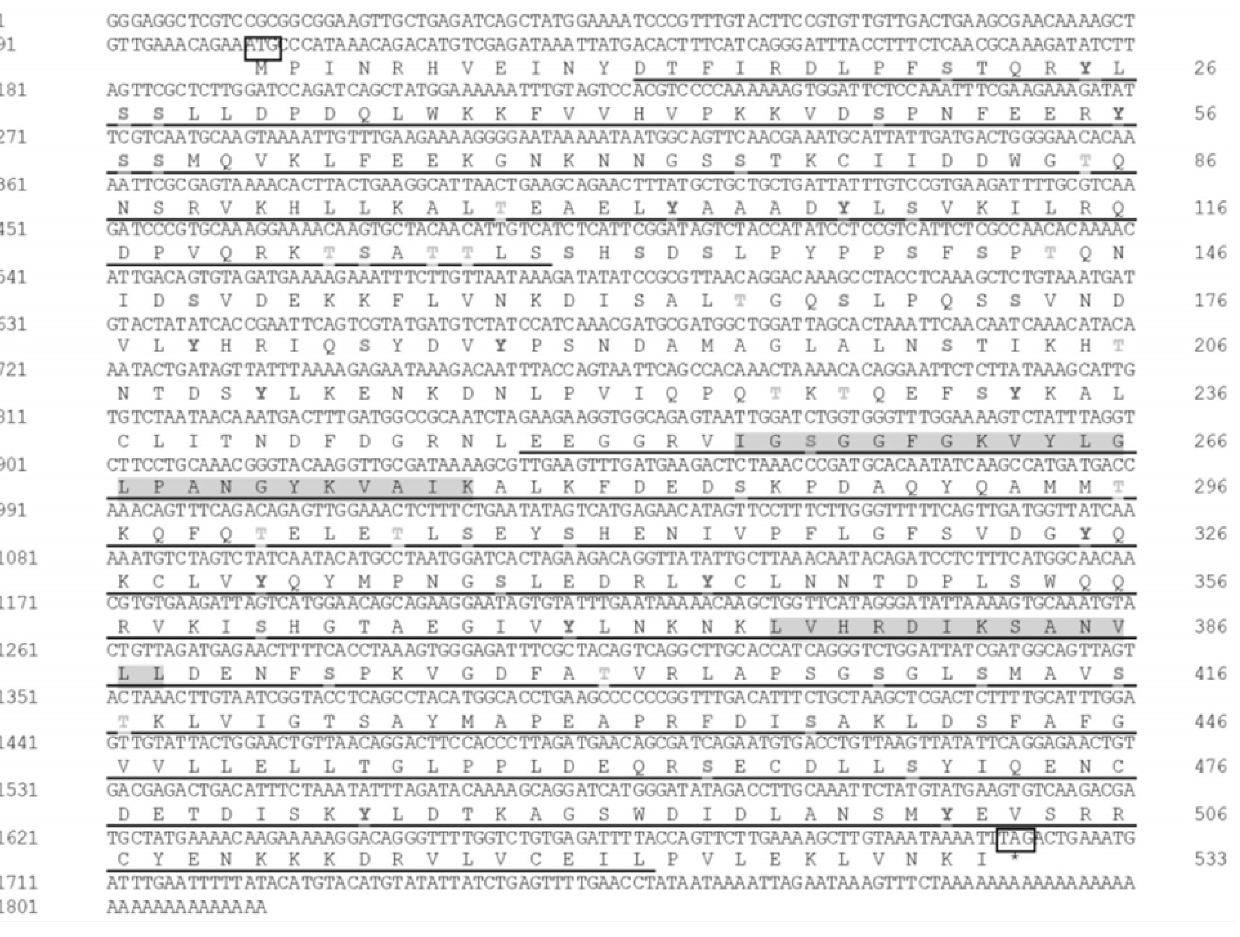IRAK-b gene of mytilus crassitesta and use of gene
A thick-shelled mussel and genetic technology, applied in the field of genetic engineering, can solve problems such as limited research, achieve strong recognition and induction capabilities, convenient operation, and reasonable design effects
- Summary
- Abstract
- Description
- Claims
- Application Information
AI Technical Summary
Problems solved by technology
Method used
Image
Examples
Embodiment 1
[0031] The IRAK-b gene of the thick-shelled mussel was obtained by the following method:
[0032] 1. Total RNA extraction;
[0033] (1) Take 30 mg of gill tissue sample in a 1.5mL centrifuge tube;
[0034] (2) Add 200μL Trizol Regent to the centrifuge tube;
[0035] (3) Add 800μL Trizol Regent after rapid and sufficient grinding with an electric grinding rod;
[0036] (4) Use a pipette to repeatedly suck and suck the precipitate to resuspend it and leave it at room temperature for 5 minutes;
[0037] (5) Add 200 μL of chloroform, cover the centrifuge tube tightly, shake vigorously by hand for 15 seconds, and leave it at room temperature for 10 minutes;
[0038] (6) Centrifuge at 12000×g for 15 minutes at 4°C to separate the solution into upper, middle and lower layers;
[0039] (7) Carefully pipette the upper aqueous phase solution into another centrifuge tube, add 500μL of isopropanol, and mix gently;
[0040] (8) Place the mixed solution at -20°C for 30 min;
[0041] (9) Centrifuge at 1200...
Embodiment 2
[0102] Tissue-specific expression of IRAK-b gene in mussel
[0103] Collect 5 kinds of tissues (adductors, hemolymph, gills, gonads, and hepatopancreas) of mussels with thick shells, and extract total RNA from the collected samples according to the recommended method of Trizol Total RNA extraction kit from TaKaLa Proceed (refer to Example 1 for total RNA extraction for specific steps). Then use M-MLV (RNAase H - ) Reverse transcription kit, using total RNA for cDNA synthesis. According to the obtained IRAK-b gene sequencing results of the thick-shelled mussel, Primer 5.0 software was used to design the primers required for the IRAK-b gene fluorescence quantitative PCR. When designing primers, it is required that the annealing temperature of the forward and reverse primers is within 1℃, and the Tm is above 60℃. There is no complementation between the primers, and no primer dimer is formed during the PCR reaction. The primers were screened by gradient PCR and sequenced, and fina...
Embodiment 3
[0109] Expression of IRAK-b gene in the gill of the mussel Thick shell mussel after pathogen infection
[0110] According to the tissue-specific results of IRAK-b gene, gills were selected as candidate tissues to study the time expression profiles of McIRAK-b and McIRAK-a after infection. The specific method is as follows:
[0111] Choose healthy thick-shell mussels and keep them temporarily for two days at a breeding density of 40 / 21L, during which oxygenation is continued. Spirulina powder was fed once every morning and evening, and the water was changed 1 / 2 every 24h (before feeding at night), and the water was artificially configured seawater with a salinity of 30‰. Then the thick shell mussels were randomly divided into 3 groups, 30 in each group, and the adductor muscles of each group were injected with PBS (pH 7.4) resuspended Vibrio alginolyticus ( Vibrio parahemolyticus ) And Vibrio parahaemolyticus ( Vibrio Parahemolyticus ), the dose was 0.1 mL / head, the control grou...
PUM
 Login to view more
Login to view more Abstract
Description
Claims
Application Information
 Login to view more
Login to view more - R&D Engineer
- R&D Manager
- IP Professional
- Industry Leading Data Capabilities
- Powerful AI technology
- Patent DNA Extraction
Browse by: Latest US Patents, China's latest patents, Technical Efficacy Thesaurus, Application Domain, Technology Topic.
© 2024 PatSnap. All rights reserved.Legal|Privacy policy|Modern Slavery Act Transparency Statement|Sitemap



